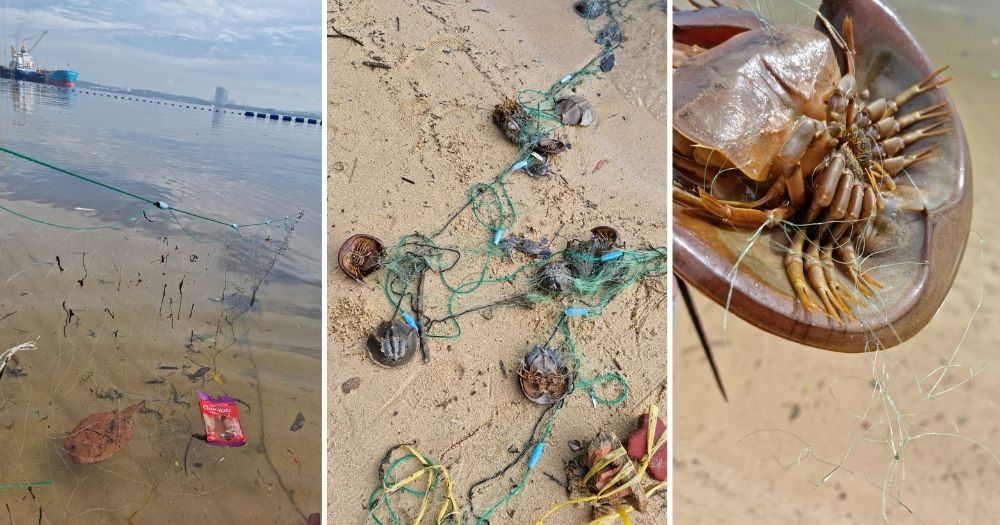Follow us on Telegram for the latest updates: https://t.me/mothershipsg
Park goer Kris Mcnab stumbled upon an abandoned gill net with numerous tangled wildlife on the morning of Apr. 26.
He shared his encounter near Sembawang Park Fishing Jetty on the Singapore Wildlife Sightings Facebook group.
At least 50 horseshoe crabs
Attached to the net were at least 50 horseshoe crabs, two marine catfish, baby breams, flower crabs and stone crabs, Mcnab told Mothership.
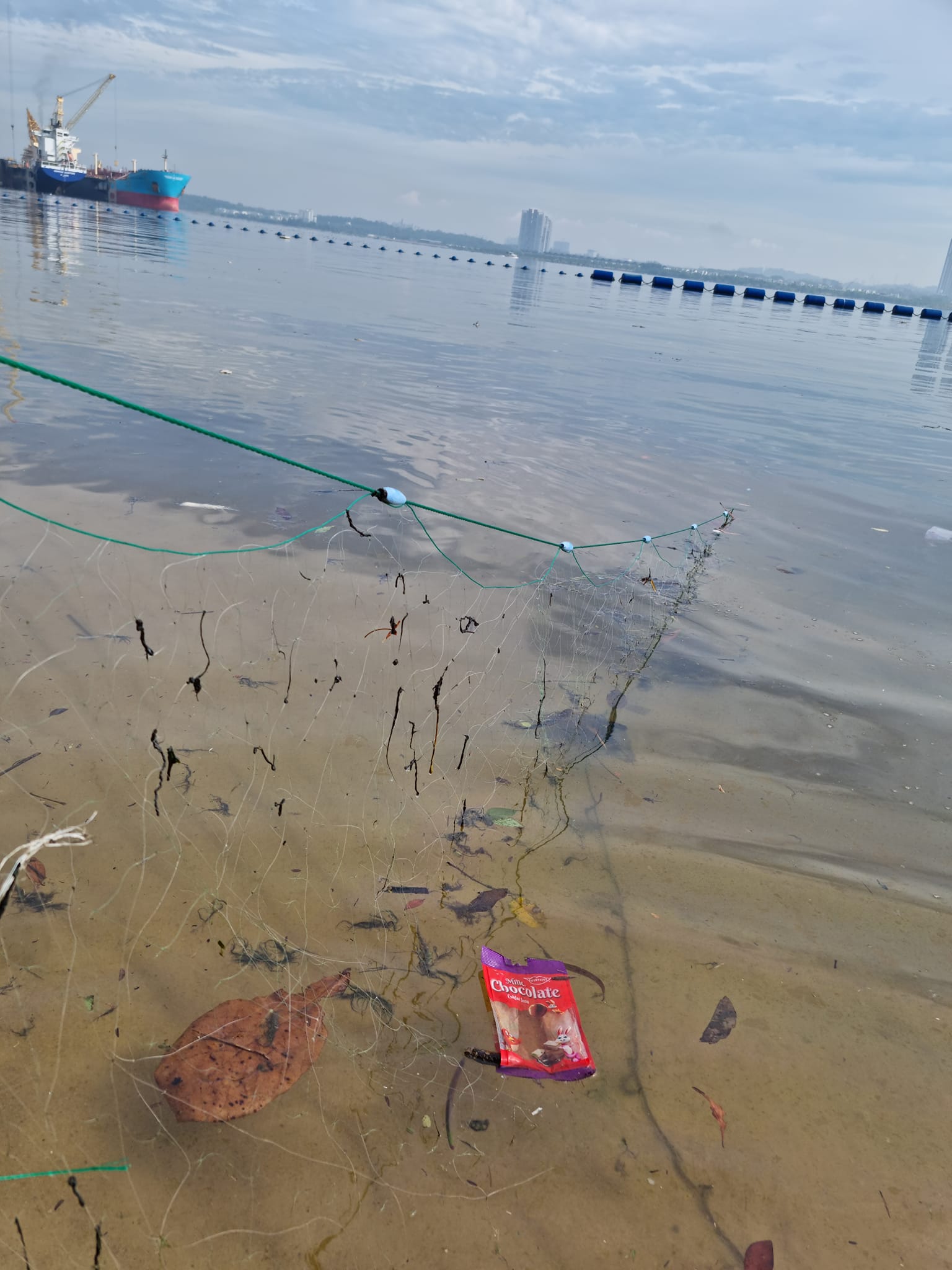 Image by Kris Mcnab.
Image by Kris Mcnab.
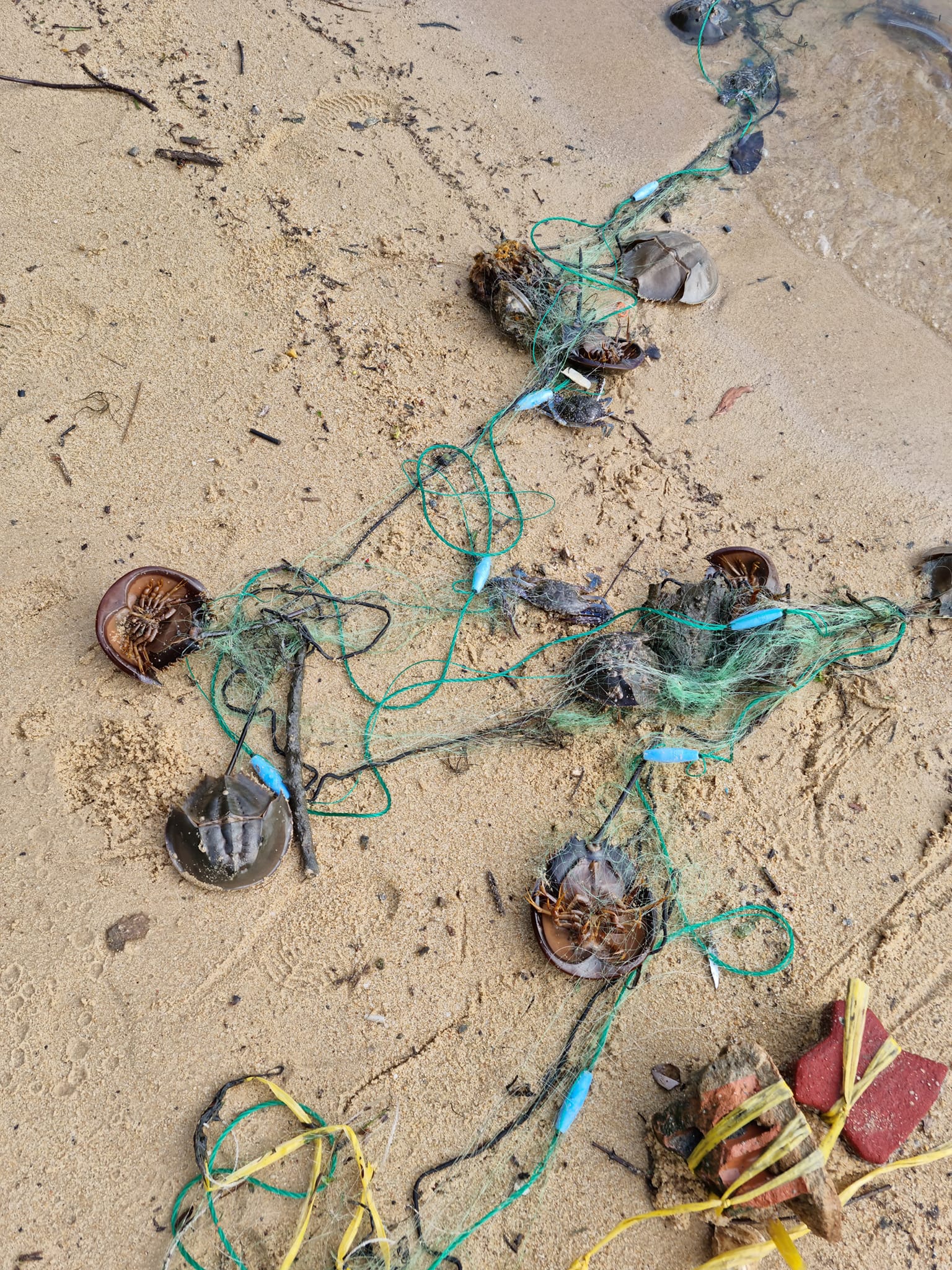 Image by Kris Mcnab.
Image by Kris Mcnab.
Some of the horseshoe crabs were still alive when Mcnab spotted them.
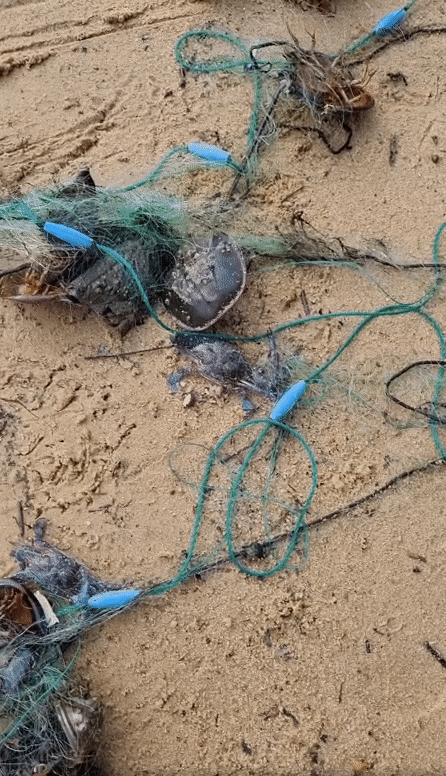
There are four horseshoe crab species in the world, two of which are sometimes encountered in Singapore's shores.
The mangrove horseshoe crab is listed as "Vulnerable" while the coastal horseshoe crab is listed as "Endangered", according to the Singapore Red Data Book.
Despite their name, horseshoe crabs are not crabs or even crustaceans, but rather more closely related to spiders and scorpions.
These harmless creatures are also known as living fossils as they have been around for the past 400 million years and have undergone little morphological evolution for at least 200 million years.
Globally, horseshoe crabs are highly sought after and over-harvested for human consumption and biomedical testing.
Their bright blue blood contain immune cells that are sensitive to toxic bacteria and therefore used by scientists to develop new vaccines, drugs or medical devices that are safe for human use.
Their populations are also being threatened by habitat loss arising from coastal development and climate change.
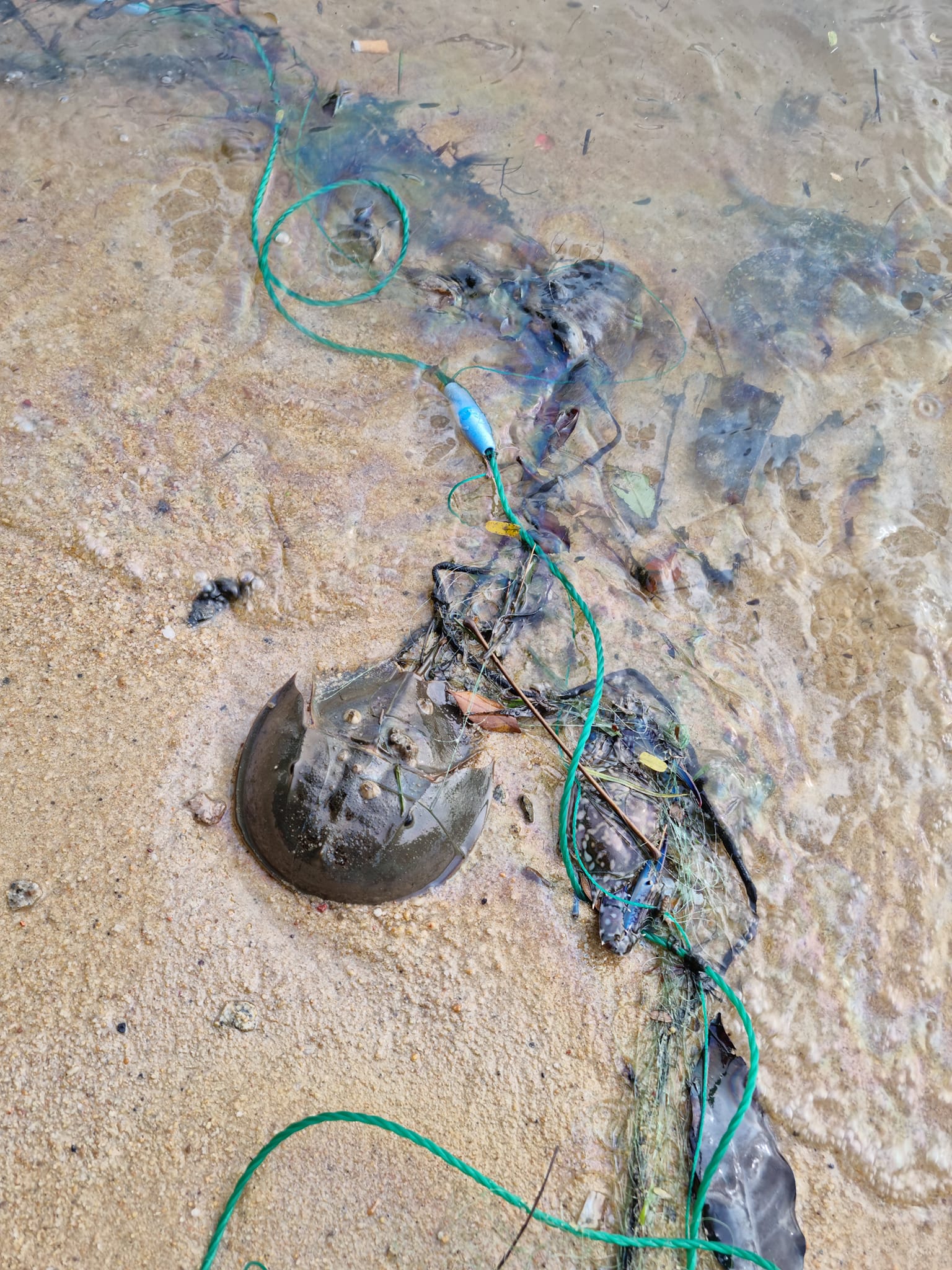 Image by Kris Mcnab.
Image by Kris Mcnab.
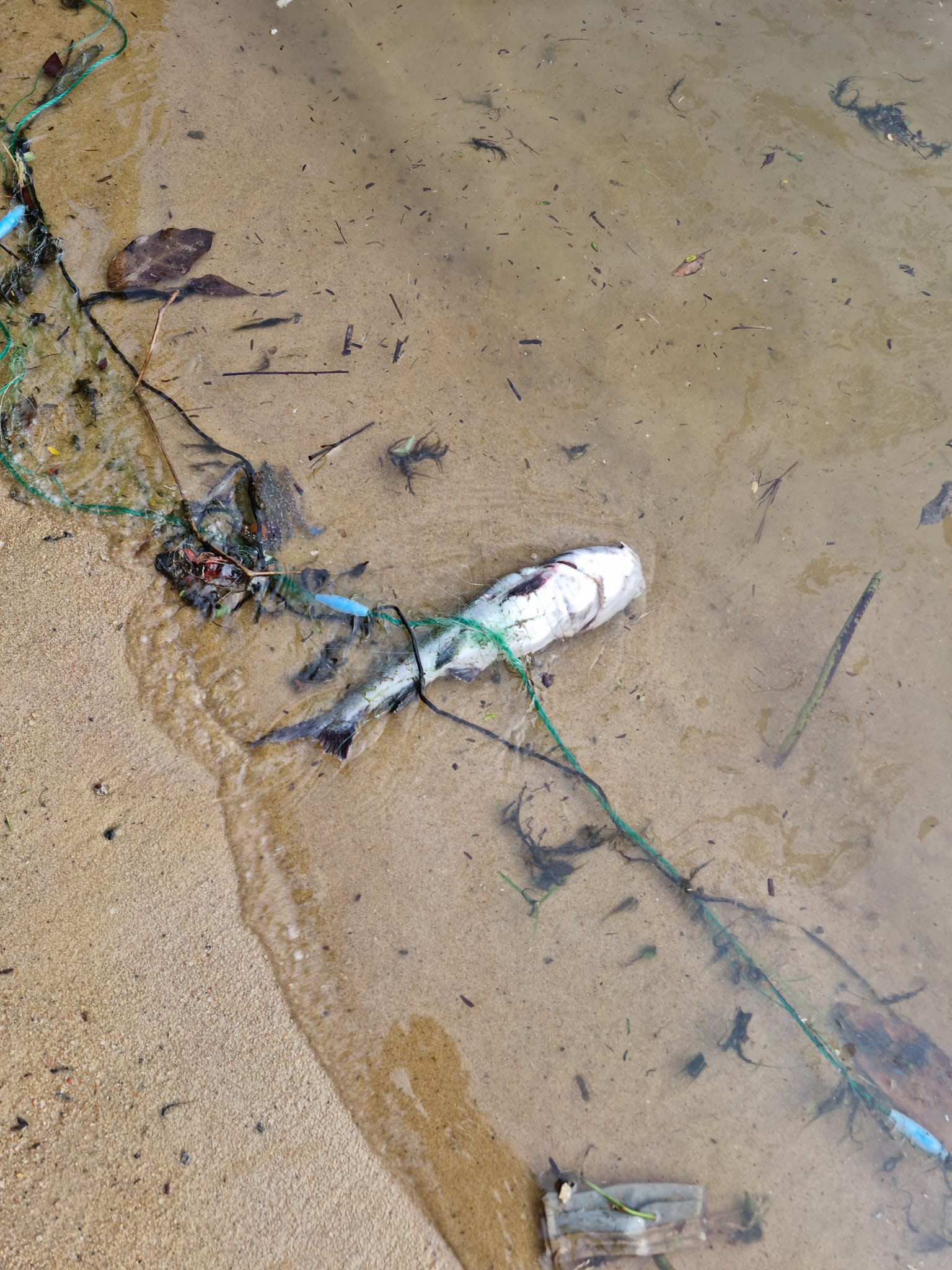 Image by Kris Mcnab.
Image by Kris Mcnab.
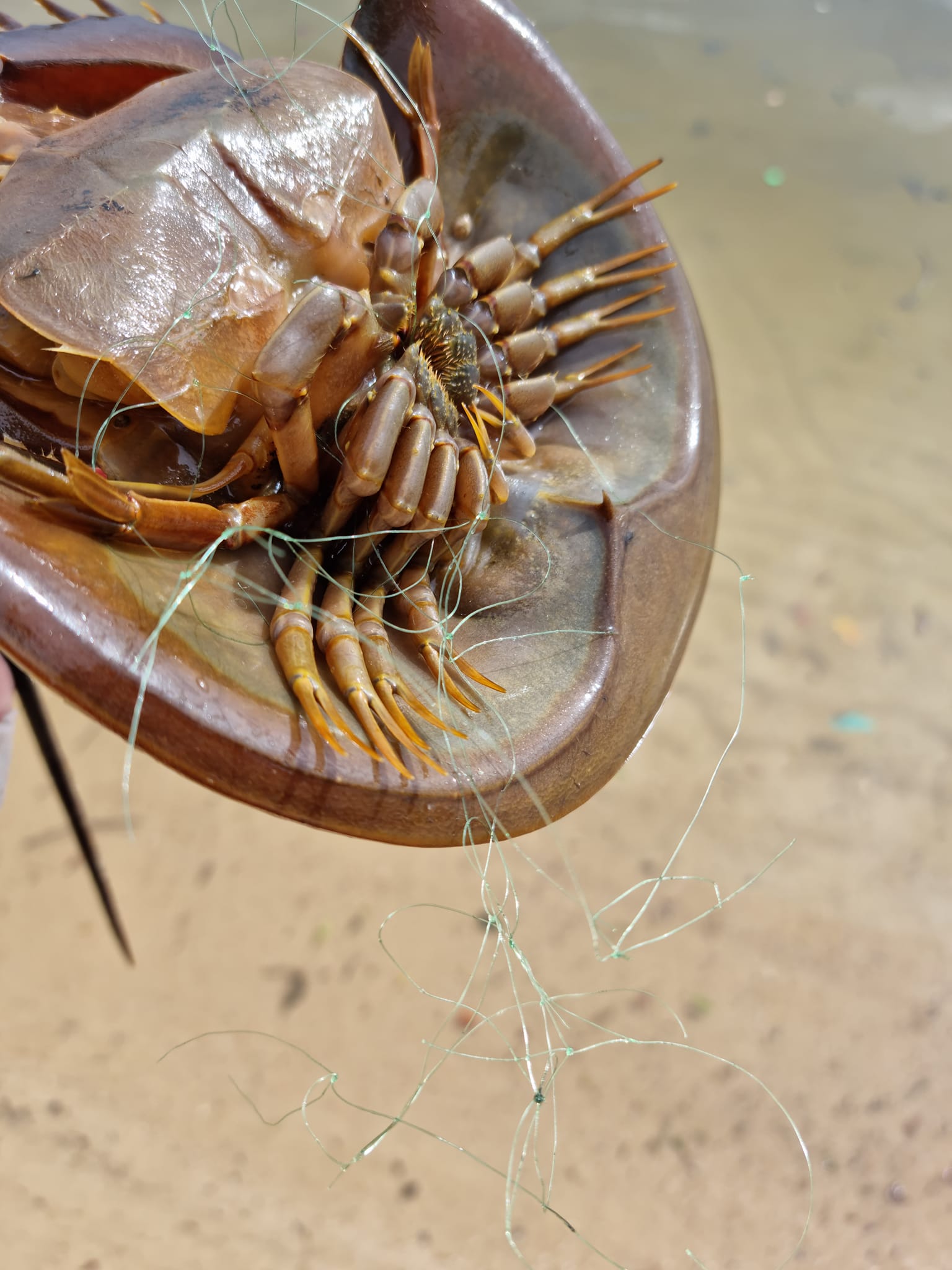 Image by Kris Mcnab.
Image by Kris Mcnab.
Gill net at least 30m long
Mcnab waded into the waters to pull the net upshore.
With the help of a cleaner at the beach, a pocket knife was used to release as many marine creatures from the net as possible.
He said the net had been laid across the shore and weighed down using bottles and rocks and tied to the blue barrels in the distance.
It had also been there for at least one full day, as it smelt strongly of rotting catfish.
He believes that the gill net was at least 30 to 50m long.
"I'm not able to retrieve the rest due to deep water risk," said Mcnab.
In total, the entire operation to cut the net and release the wildlife took him at least two hours.
More abandoned nets over the years
Mcnab has retrieved several abandoned nets since 2020.
In the past three years, he said he observed an increase in occurrences of gill nets and drift nets along the stretch of coast between Sembawang Beach Park and Sembawang Water Venture Club.
He visits the park at least once every two weeks to fish and cycle with his family.
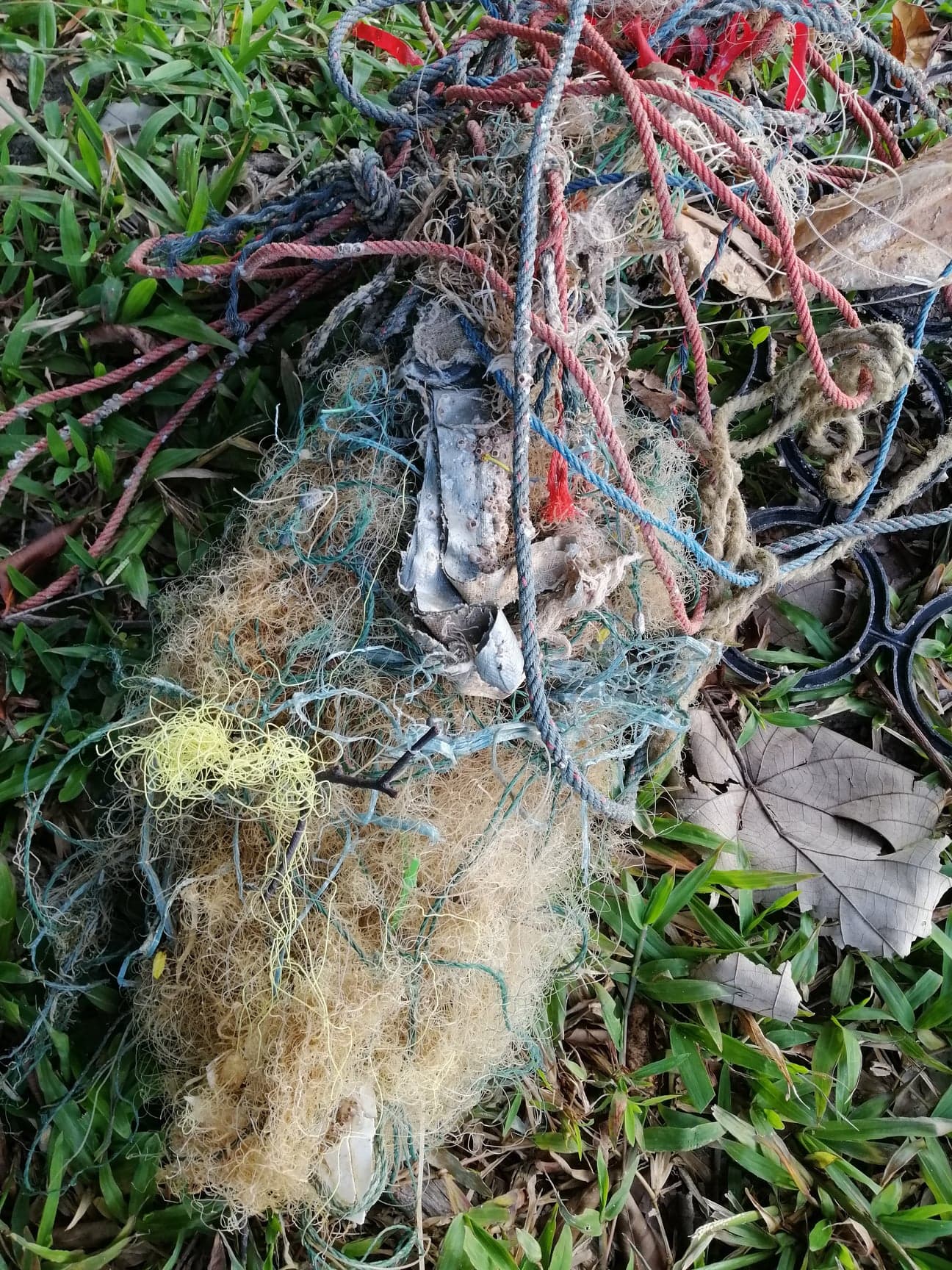 Taken in November 2021. Image by Kris Mcnab.
Taken in November 2021. Image by Kris Mcnab.
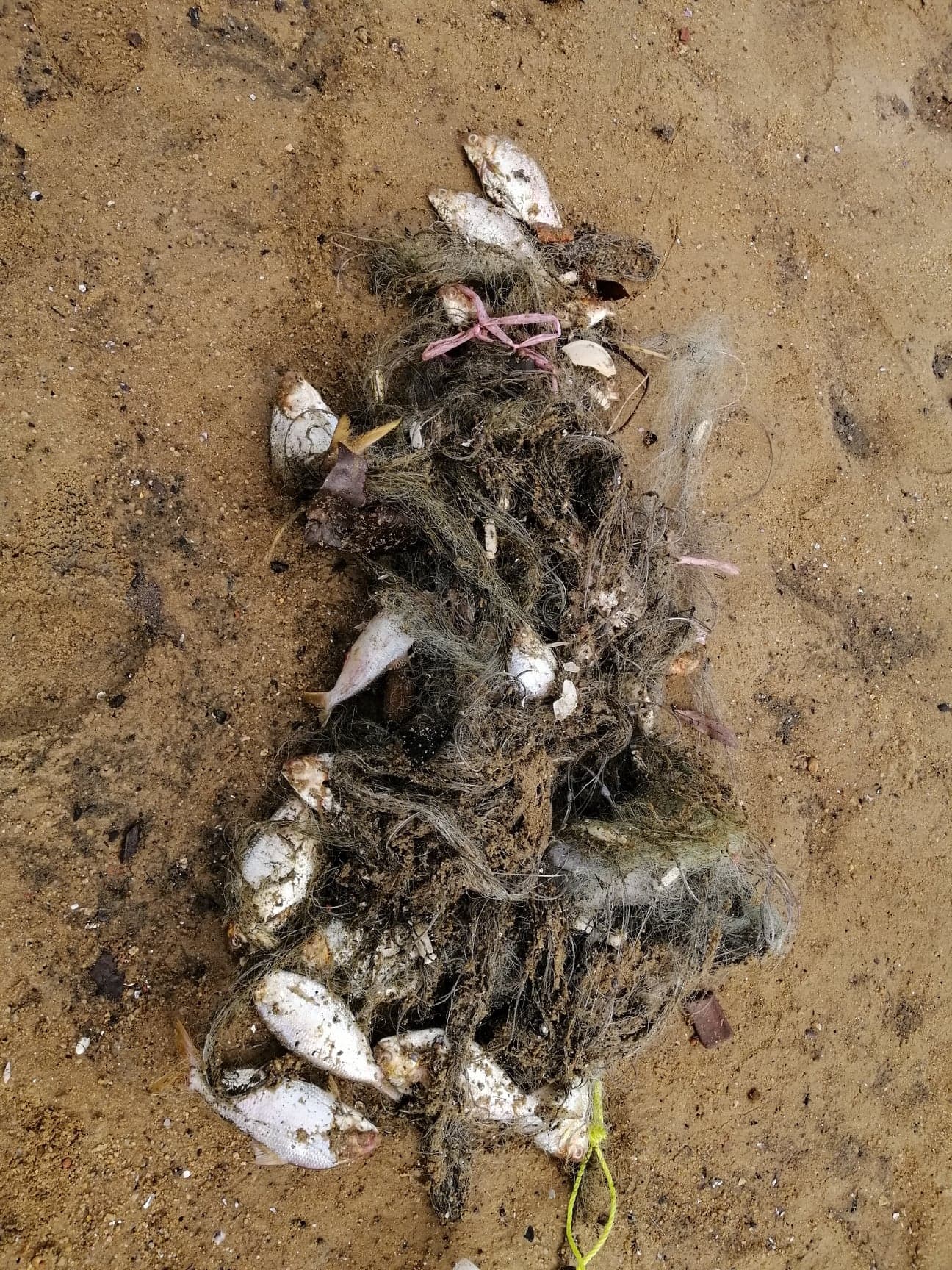 Taken in June 2020. Image by Kris Mcnab.
Taken in June 2020. Image by Kris Mcnab.
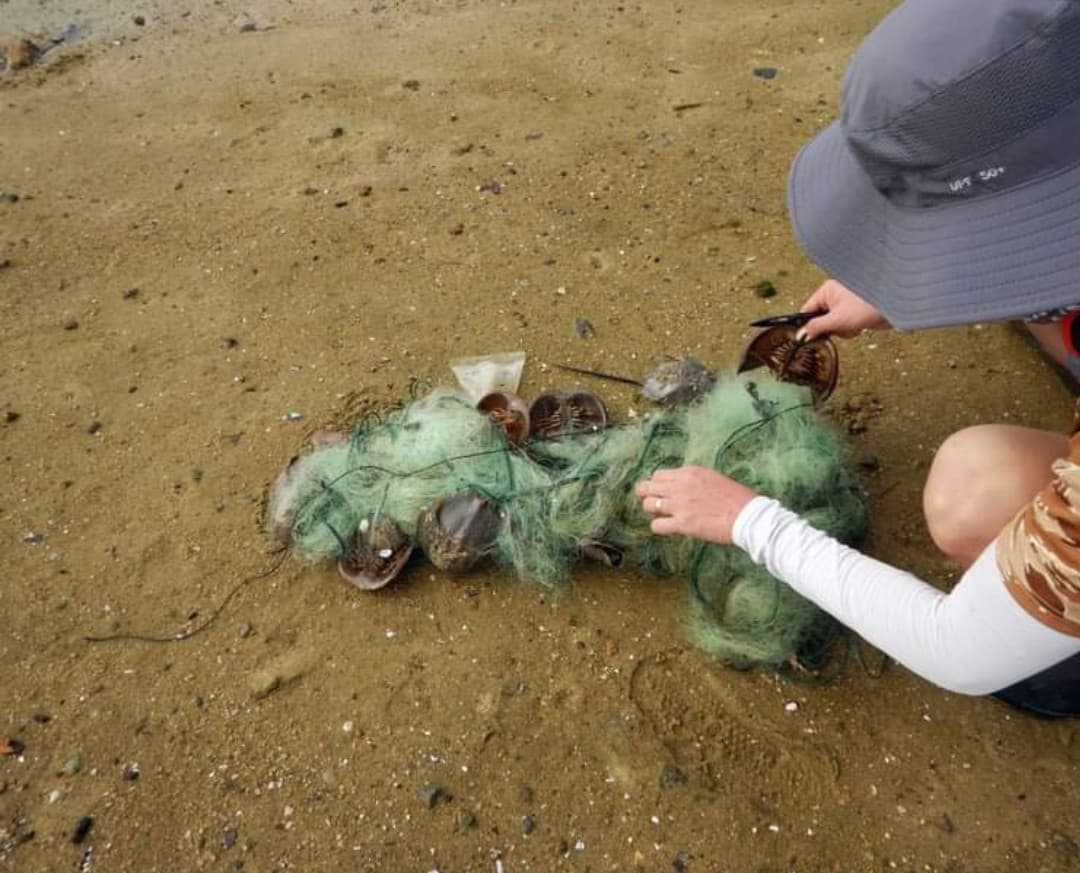 Taken in June 2021. Image by Kris Mcnab.
Taken in June 2021. Image by Kris Mcnab.
Net fishing not allowed in Sembawang Park
Fishing is only allowed in specific zones in Sembawang Park, which is one of 12 coastal areas managed by the National Parks Board (NParks).
However, net fishing is not allowed.
Anglers should avoid using gill nets as it is a destructive fishing method, advised NParks.
They tend to trap marine wildlife that are not being targeted, which include dolphins, sharks and turtles that may drown after being caught.
NParks reminds members of the public to remove their fishing nets and wire mesh traps from shores or shallow reefs after fishing as they can trap and kill many animals, especially when the tide goes out.
Mcnab contacted NParks at around 8:30am and 9am the same morning.
He was informed that NParks would be investigating the issue but would not be sending officers onsite for assistance.
Gill nets in Singapore
Top images by Kris Mcnab.
If you like what you read, follow us on Facebook, Instagram, Twitter and Telegram to get the latest updates.
